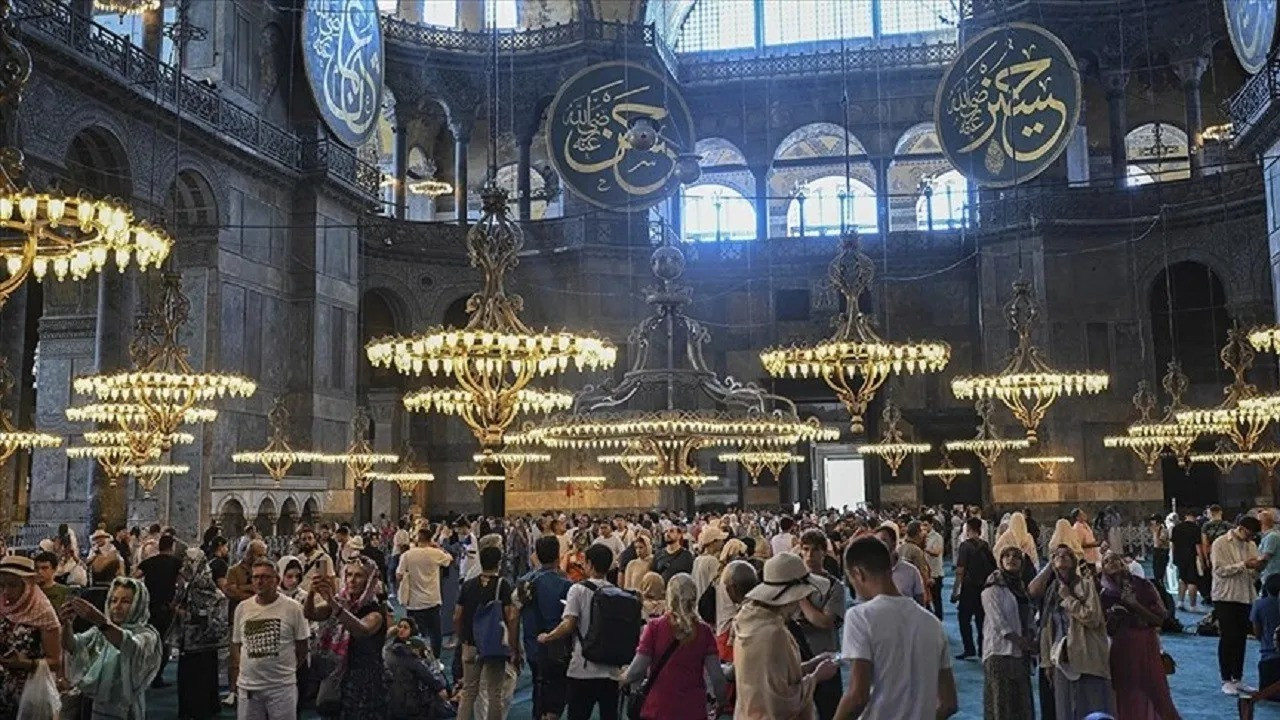Historical Bulgur Palace opening as cultural center in Istanbul
After years of abandonment, the historical Bulgur Palace in Istanbul has been reopened as a cultural and art center by the opposition-run Istanbul Metropolitan Municipality.
Duvar English
The historical Bulgur Palace, situated on Istanbul’s Kocamustafapaşa Hill, reopened as a public cultural and art center on Feb. 28 following years of restoration initiated by the opposition-run Istanbul Metropolitan Municipality (İBB), which purchased the building from Garanti Bank in 2019.
“We are opening Istanbul’s publicly owned historical sites and buildings to all Istanbulites, not to individuals. Bulgur Palace is one of the best examples of this,” Istanbul Mayor Ekrem İmamoğlu said, who is running in upcoming local elections on March 31.
Biz, İstanbul’un kamuya ait tarihi alanlarını, yapılarını, şahıslara değil tüm İstanbullulara açıyoruz. Bulgur Palas da bunun en güzel örneklerinden biri. https://t.co/ZR2J39oh59
— Ekrem İmamoğlu (@ekrem_imamoglu) February 28, 2024
The inauguration of the building features an exhibition by the globally acclaimed photography agency, Magnum Photos. The exhibition consists of over 200 works of renowned photographers and delves into the extensive archive of Magnum Photos, including those of Emin Özmen.
"Bulgur King"
The structure takes its name from the 1878 Bolu-born Mehmet Habib Bey. He commissioned renowned Italian architect Guilio Mongeri to construct ‘Bolulu Habib Bey Mansion’ in 1912.
However, the building has been generally called the ‘Bulgur Palace’, as Habib Bey allegedly made his fortune selling bulgur during the First World War.
During this period, the Committee of Union and Progress (CUP) established companies to supply "national products" to meet military’s demands. Habib Bey, a member of the CUP, accumulated considerable wealth by trading products such as bulgur, barley, and wheat. Earning him the nickname "The King of Bulgur."
Yet, Habib Bey would never witness the completion of his mansion. Following the Allied Powers’ occupation of Istanbul in the aftermath of World War I, he was among 145 Turkish politicians, soldiers, and administrators exiled to Malta in March 1919. A British colony at the time.
Upon his eventual return from exile, Habib Bey resumed the construction of the mansion. However, with his once-thriving trade faltering, he resorted to taking out a loan from the Ottoman Bank to sustain the construction.
Habib Bey succumbed to a heart attack in 1926 at the age of 48. His wife, Bedia Hanım was forced to transfer the mansion to the Ottoman Bank to settle her debts.
The Ottoman Bank used the structure as an archive and later as lodgings for its employees for years before abandoning it.
The Bulgur Palace eventually came into the hands of Garanti Bank following the Ottoman Bank’s subsuming in 2001. Garanti Bank put the building on the market in the late 2010’s, after which the Istanbul Municipality bought the mansion.
(English version by Wouter Massink)

 Municipality to turn 630-year-old Istanbul castle into museumCulture
Municipality to turn 630-year-old Istanbul castle into museumCulture Footage of crumbling concrete reveals damage in Istanbul’s Hagia SophiaCulture
Footage of crumbling concrete reveals damage in Istanbul’s Hagia SophiaCulture